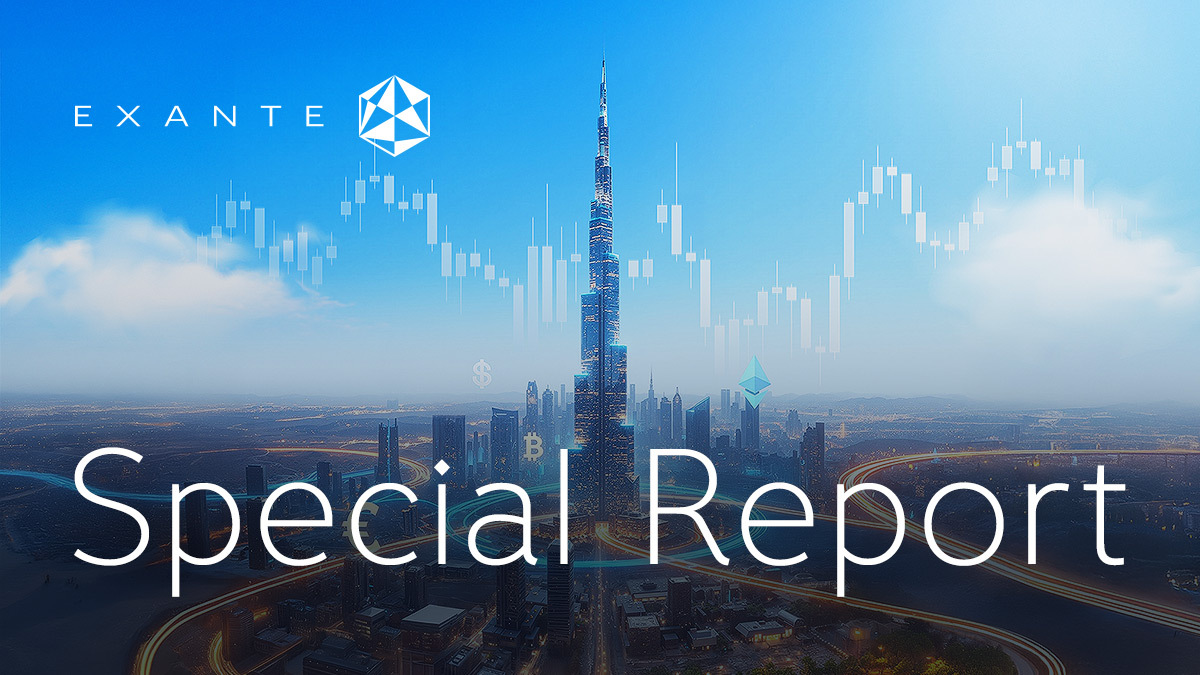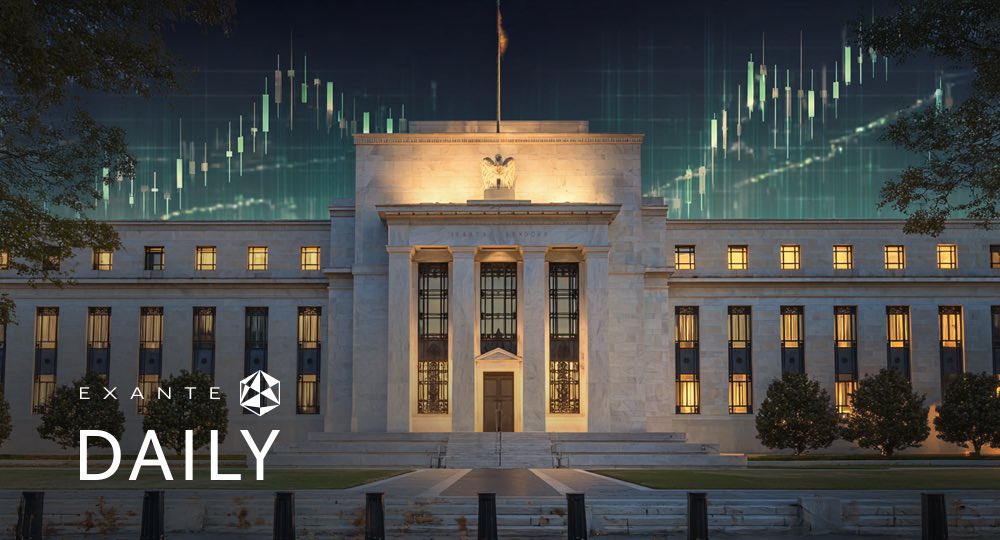
EXANTE Macro Insights

By Renée Friedman, PhD
The week in summary:
Welcome to Macro Insights #20. This week markets shifted once again as investors weighed the growing certainty of rising rates and the greater impact of the Russian-Ukrainian crisis on consumer demand and production vs the economy’s strength and resilience. This week stock markets did manage to gain back some ground, yields rose and oil prices dropped from recent highs.
This past week the Fed made clear that it really has decided to take a much more aggressive stance against inflation. On Monday Fed Chairman Jerome Powell said the Fed must move "expeditiously" to raise rates and that nothing would prevent the Fed raising rates by half a percentage point at the May 3-4 policy meeting. This was reiterated during the week by various Fed policy makers: on Tuesday St. Louis Fed President James Bullard said that “the Fed needs to move aggressively to keep inflation under control.” Also on Tuesday Cleveland Fed President Loretta Mester voiced her support for bigger rate hikes by saying that she thinks it is better to front-load some of the needed increases earlier rather than later in the process because “it puts policy in a better position to adjust if the economy evolves differently than expected,” on Wednesday San Francisco Fed President Mary Daly told Bloomberg that "I have everything on the table right now. If we need to do 50 (basis points), 50 is what we'll do,” and on Thursday, Chicago Fed President Charles Evans said he's “comfortable” with raising rates in quarter-point increments, while being “open” to a 50 basis-point move if needed. Minneapolis Fed President Neel Kashkari said he has pencilled in seven quarter-point interest rate hikes this year, but warned against going too far.
The Fed raised the benchmark rate a quarter point to 0.50% last week. Although last week’s decision initially saw the Fed policy rate at about 1.9% by year end, traders are now pricing a year-end policy rate range of 2.25%-2.5%. The sharp rise in short-dated yields has flattened the gap between two- and 10-year U.S. yields to its lowest levels since the coronavirus pandemic hit global markets in March 2020. Although this yield flattening is usually seen as a sign of upcoming recession or economic downturn, much will depend on what happens with energy supplies and prices. The US is trying to get allies to agree to releasing more supplies. IEA member states had agreed to release over 60 million barrels of oil reserves earlier in March in an attempt to calm energy markets.
The positive comments from the Fed, along with a tight labour market, weekly jobless claims fell 28,000 to 187,000 last week, seem, for now, to be convincing traders that the US economy is capable of remaining resilient.
This new willingness to aggressively tackle inflation does not appear to be quite the same in the Eurozone as there seems to be growing splits among ECB policy makers about the risks of recession in the Eurozone and how to deal with record high inflation. On Tuesday ECB policymaker Francois Villeroy de Galhau said that the ECB needed to normalise monetary policy to keep people's inflation expectations anchored. However, ECB Vice President Luis de Guindos said that inflation expectations were not becoming de-anchored. On Thursday ECB board member Isabel Schnabel said that the ECB would consider extending the APP (asset purchase programme) beyond this summer if the euro zone economy fell into a "deep recession" because of the Ukrainian crisis while Estonian central bank governor Madis Mueller, a member of the ECB’s Governing council, said the ECB would only extend the APP if there was "a dramatic shift" in the inflation outlook. However, ECB Governing council member Mario Centeno said the ECB’s economic scenario does not contemplate a recession in the euro zone despite the Ukrainian crisis and that the "normalisation of the ECB's monetary policy will be carried out gradually and proportionally at the end of this year." At its meeting earlier this month the ECB said it would end its bond-buying stimulus scheme this summer and that it “stood ready to adjust all instruments.”.
In the UK, inflation reached a 30 year high, coming in at 6.2% in February, up from January's 5.5%. The UK economy is forecast to grow by 3.8% this year according to the Office for Budget Responsibility. This is significantly down from the previous forecast of 6%. The economy is then forecast to grow by 1.8% in 2023, 2.1% in 2024, 1.8% in 2025 and 1.7% in 2026. The annual inflation rate is likely to average 7.4% for the rest of this year, but is forecast to peak at 8.7% in the final quarter of 2022. Consumer energy bills are expected to increase 40% when the price cap is raised again in October if global energy prices remain at current levels. In short, this leaves the Bank of England (BoE) watching closely for signs that inflation is becoming embedded in expectations. The potentially significantly slower growth, in addition to a further acceleration of inflation and an expected drop in demand, is likely to have both the BoE and traders worried that the UK is on a stagflationary path in the months ahead.
Things to look out for this coming week
- In Europe on Friday there is the EU leaders summit. There is also Spanish GDP, Italian Business and Consumer Confidence survey data, and German IFO Business Climate, Current Assessment and Expectations survey data. On Tuesday is German GfK Consumer Confidence survey data, French Consumer Confidence and Spanish retail sales data. On Wednesday look out for Spanish CPI and HICP data, Eurozone Business Climate, Industrial confidence, Economic Sentiment, and Consumer Confidence survey data, and German CPI and Harmonised Index of Consumer Prices. On Thursday there is German retail sales data, German unemployment data, French CPI, Italian unemployment and CPI data, and the Eurozone Unemployment rate.
- In the US on Friday there is the Michigan Consumer Sentiment Index and Pending Home sales data. There are also speeches by Federal Reserve Bank of New York President John Williams and Fed Board of Governors member Christopher Waller. On Tuesday look out for the Housing Price Index and the S&P/Case-Shiller Home Price Indices. On Wednesday there is ADP employment change, GDP, Core Personal Consumption Expenditures, and Personal Consumption Expenditure Prices. On Thursday look out for initial jobless claims data, the Core Personal Consumption Expenditures Price Index, Personal Income and Personal Spending data, and the Chicago Purchasing Managers Index.
- In the UK look out for GfK Consumer Confidence and retail sales data on Friday. On Tuesday the Bank of England releases its quarterly bulletin. On Wednesday there is a speech by Bank of England Monetary Policy Committee (MPC) member Ben Broadbent. On Thursday look out for GDP data.
There is an OPEC+ meeting on Thursday 31 March. Given the massive surge in oil and gas prices following the Russian-Ukrainian crisis, there has been increasing pressure on OPEC+ by several nations, including the United States, to raise their output at a faster rate to help reduce the volatility of crude oil prices. However, on Tuesday, 22 March, Saudi Arabia gave an indication that OPEC+ will not raise production as it stressed "the essential role" of the OPEC+ agreement in bringing balance and stability to oil markets. That agreement only commits to increasing output by 400,000 barrels per day (bpd) each month to unwind cuts made during the Covid pandemic.
Don’t forget that Sunday is the start of Daylight Savings time in the UK and Europe. The clocks move forward one hour.
The coming commodity wars?
In 2009 Ismail Serageldin, then Vice President of the World Bank said “the wars of the twenty-first century will be about water, unless we change the way we manage water”. Over the past 13 years the world’s supply of fresh water has continued to be negatively affected by climate change, population growth, and urbanisation, all factors increasing competition for water resources. According to the BBC water scarcity affects roughly 40% of the world's population and, according to predictions by the United Nations and the World Bank, drought could put up to 700 million people at risk of displacement by 2030. There have been ongoing disputes over water between Egypt and Ethiopia, India and China, across the Mekong Delta and in Latin America.
It now seems that the lack of wheat and other key agricultural products like sunflower oil may also be added to the possible causes of future global conflict as, in the words of Maximo Torero, chief economist at the UN Food and Agriculture Organisation (FAO) “the world is facing a potential food crisis, with soaring prices and millions in danger of severe hunger.” Food prices were already high before the Russian-Ukrainian crisis due to the Covid-19 pandemic. The FAO’s Food price index reached a record high in February after wheat and barley prices rose by nearly a third and rapeseed and sunflower oil by more than 60% during 2021. According to The Guardian the price of urea, a key nitrogen fertiliser, has more than tripled in the past year due to rising energy prices. And, as with water, climate change is impacting agricultural production. As noted in February’s IPCC report , rising temperatures are already affecting crop yields and quality, and acting as a drag on agricultural productivity. Heavy rainfall during the winter of 2021 delayed the planting of approximately one third of land used for wheat in China. And, as noted by Scientific American, in Turkey, people are rushing to buy cooking oil in anticipation of further price hikes, Thailand faces surging costs for fertiliser and feed stock, Egypt, the top importer of Russian wheat, has banned exports of homegrown grain, and Indonesia has restricted exports of palm oil, a potential substitute for other vegetable oils.
The FAO says that food prices could surge another 22% as the Russian-Ukrainian crisis limits trade and slashes future harvests. The rapidly rising price of fertiliser means that other countries will only partly be able to compensate for the “sudden and steep reduction” in Black Sea grain and sunflower exports in the coming 2022-23 season.
So what does this mean for the future? It means that states are likely to increase their defence budgets not just due to changing geopolitical alliances but also due to the growing need to secure physical resources. And, if states move towards greater levels of domestic production by, for example, more clear-cutting for food production, it could lead to increased emissions by unlocking carbon stored in the soil. Climate change effects would continue as attempts at increased self sufficiency would also constrain global trade and increase its volatility. Food security and ESG are intrinsically linked.
And what does this mean for markets? In a worst case scenario it may mean that this increasing volatility will put further pressure on traders and industrial players, already struggling to keep up with massive cash requirements to back up their positions or put on new ones. It may contribute to further drops in liquidity, which in turn, may heighten volatility, creating a negative feedback loop. However, loops can be broken, but that will require a concerted effort to increase productivity without compromising sustainability.
DISCLAIMER: While every effort has been made to verify the accuracy of this information, EXT Ltd. (hereafter known as “EXANTE”) cannot accept any responsibility or liability for reliance by any person on this publication or any of the information, opinions, or conclusions contained in this publication. The findings and views expressed in this publication do not necessarily reflect the views of EXANTE. Any action taken upon the information contained in this publication is strictly at your own risk. EXANTE will not be liable for any loss or damage in connection with this publication.
本文提供給您僅供資訊參考之用,不應被視為認購或銷售此處提及任何投資或相關服務的優惠招攬或遊說。金融商品交易涉及重大損失風險,可能不適合所有投資者。過往績效不代表未來表現。




